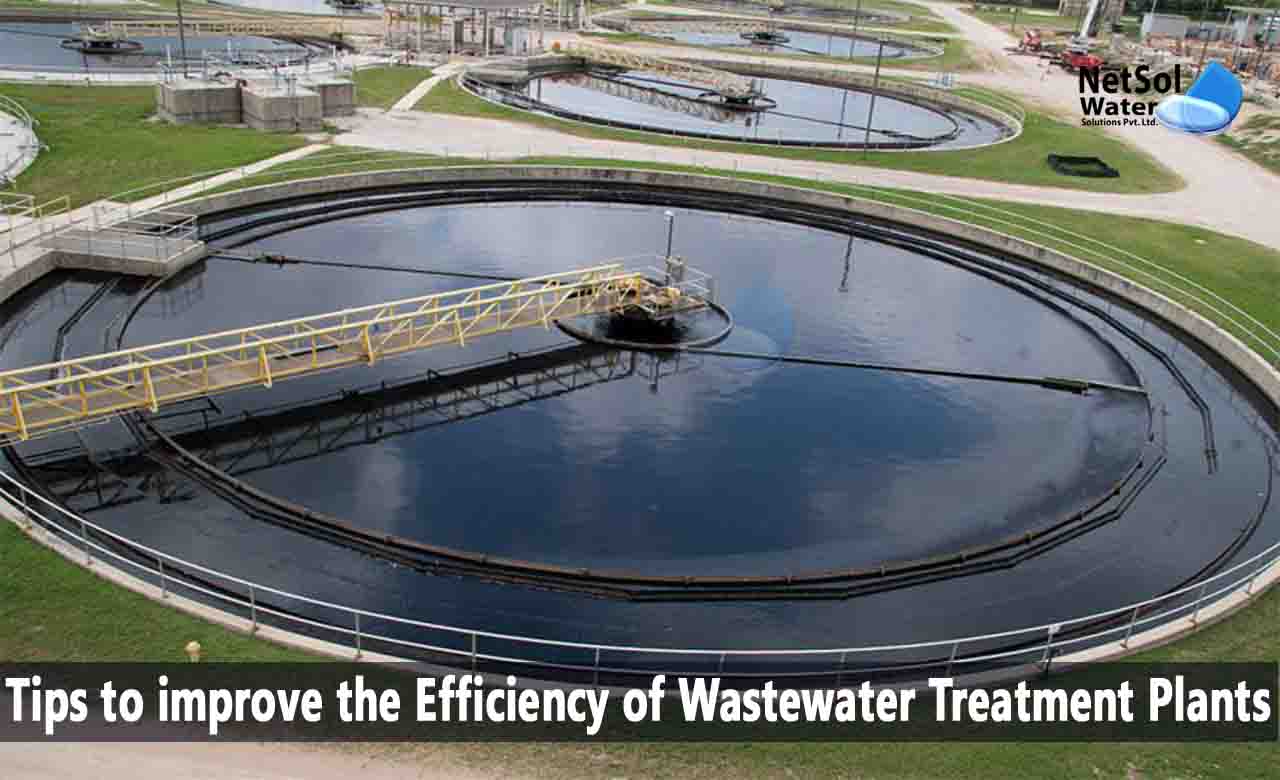According to the Central Pollution Control Board report 2020-21, India has 1,631 sewage treatment plants. There are 1,093 operational plants, 102 non-operational plants, 274 under construction, and 162 proposed for construction. Many of the operational plants do not meet the criteria set by the central government.
If these systems do not function properly, the risk of repairs, operational costs, and massive fines increases, as effluent levels rise in the treated water. Furthermore, the government is developing stringent rules for wastewater treatment, and discharge of water into natural streams. With water scarcity as a backdrop, wastewater treatment is a pressing need, increasing pressure on municipalities and industries, to improve water treatment efficiency.
As a result, it is critical to building more wastewater treatment plants, and for existing plants to operate efficiently.
Tips to enhance the Efficiency of Wastewater Treatment Plants or WWTPs
• Amount of effluent: The effluent quantity is the most common indicator. The efficiency of wastewater treatment plants decreases as effluent levels rise. The Central Pollution Control Board in India develops stringent regulations for effluent emission limits.
As a result, industries and municipalities must work to improve the quality of effluent, discharged into rivers and lakes.
• Operating costs: Despite, spending significant capital to meet emission limits, many industrialists do not consider investments in wastewater treatment plants. Furthermore, working with vintage equipment is costly, due to the high maintenance, repairs, and frequent breakdowns.
However, investment in mechanism upgrades and renewal is worthwhile, because it increases the efficiency of the wastewater treatment plant.
• Chemical costs: To meet discharge limits, plant operators use a large number of chemicals in water treatment, resulting in high chemical bills. The use of carbon in the denitrification process is the most significant chemical consumption.
The removal and replacement of costly chemicals is required because, in addition to mechanical deficiencies, these chemical bills may increase operating costs.
Internal system audits
• Pump stations: Traditional wastewater treatment plants use pumps based on peak plant flow, resulting in increased water and energy consumption. Constant speed pumps, on the other hand, can be modified with Variable Frequency Drive to reduce water and energy consumption by 50%.
As a result, replacing or upgrading traditional pumps is critical, to increasing the efficiency of wastewater treatment plants.
• Aeration devices: Aeration systems in wastewater treatment plants consume 50% of total annual electricity consumption. Variable frequency drives and dissolved oxygen control systems, can be added to air distribution system components and blowers, to reduce electricity consumption.
• Additional accessories: Backwash water and energy may be used in excess by conventional filters. As a result, existing infrastructure must be supervised in order to improve the work efficiency, of wastewater treatment plants.
Similarly, switching to a high-density sludge process can reduce water consumption, while also lowering sludge disposal costs.
• Recuperation of essential nutrients: Phosphorus recovery from wastewater treatment can result in commercial-grade fertilizer, as it is an essential component of fertilizer.
Furthermore, phosphorous recovery generates a new source of revenue, while reducing the phosphorous load in the natural water stream.
• Make the most of gravity: When considering the water flow in the wastewater treatment plant, gravitational force can replace electric motors. Gravitational energy can be used instead of motors to pull down the water flow, in the down flow process. It eliminates the need for regular motor inspections and addresses the issue of downtime.
• Implement smart technology: Industries avoid smart technology implementation due to a false perception of the associated hassles, such as high operational costs, technical knowledge, and expertise. Smart technologies, on the other hand, require less labour and are easier to manage.
• Establish a goal: Setting a benchmark is critical to meeting performance goals. It assists managers and plant operators in identifying operational gaps and trends, as well as strategies for closing the gaps and meeting goals.
• Examine the data: Traditional wastewater treatment plants were not designed with data collection in mind, but managers and plant operators must monitor efficiency parameters.
Leaks, filter quality, and backwash rates are all efficiency parameters. Data analysis identifies the need for additional improvements, adjustments, and energy consumption.
How can we assist?
Netsol Water provide a wide range of modern solutions, including water softener, wastewater treatment plants, sewage treatment plants, water treatment plants, RO Plants, and many more. Our clients can take advantage of these services. We also educate our clients on how to avoid pollution by taking a sustainable strategy, and utilizing advanced treatment methods.
Netsol Water is Greater Noida-based leading water & wastewater treatment plant manufacturer. We are industry's most demanding company based on client review and work quality. We are known as best commercial RO plant manufacturers, industrial RO plant manufacturer, sewage treatment plant manufacturer, Water Softener Plant Manufacturers and effluent treatment plant manufacturers. Apart from this 24x7 customer support is our USP. Call on +91-9650608473, or write us at enquiry@netsolwater.com for any support, inquiry or product-purchase related query.



